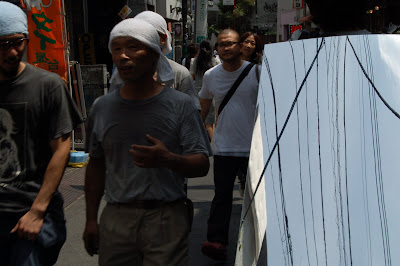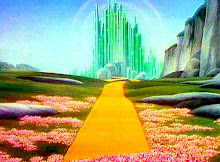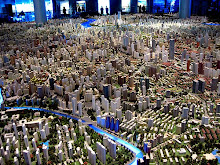
Among an organized infinity of nameless tiny streets, Tokyo showed its more interesting side with its advertisements and spectaculars over each wall.
the idea of constant buying/selling of Mexico, but turning the shouts and music in the air ... into icons and colors over plastic.
 View Larger MapView Larger Map
View Larger MapView Larger MapA lot of tiny 45 degree mirrors are to be added to these blooming landscapes in many different places of the city.



In a dense mass of inhabitants, the lack of excessive skyscrapers gives us an idea of the local problematic to develop verticality. Earthquakes and real state.
Both phenomenons clearly take place at Ginza district. The present traces of former small properties are still visible, at the extremely narrow high buildings. Furthermore, the engineering problematic of earthquakes makes these slim objects to be independently constructed, therefore 20cm-GAPS appear in between buildings. Multiple sky-fingers seem to touch the pavement.
ADVERTISING is building the other city. The most perceptive view comes from the landscape barriers of thousands of colorful bulbs and leds; this streetscape may result apparently attractive because of its abstract character for foreigners. However, it ends up with the perception of night and day, as if everything were 24 hours and the lightning atmosphere hardly changes.


Consequently, the consumer trends make informal strategies of appropriation of space appear. On one hand the analysis of Atelier Bow-Wow's Pet Architectures defines a series of MICRO buildings which try to use all expensive rest pieces of public space, such as extreme triangle corners, the narrowest gaps between buildings,... for new spontaneous uses.
On the other hand, the informal city of homeless movements make them settle down in the surroundings of peripheral highways, which has been called the BLUE PHENOMENON. Its ramshackle appearance is due to a high lack of building materials and resources, but their quality in space and urban design remains in their intrinsic Japanese sense of dwelling.

























































